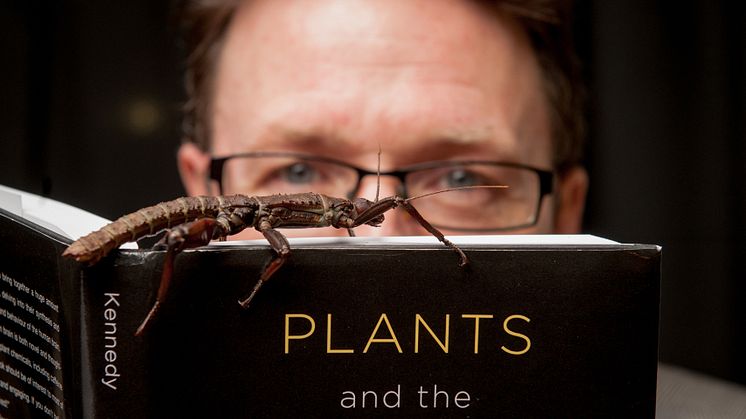
Press release -
New cases rise, but death rates decline – how cancer became about quality of life
Over the past 25 years, the number of cancer cases that are most common in men (prostate) and women (breast) has jumped. Prostate cancer has tripled, while breast cancer has doubled since 1990. This upward trend is true globally across 188 countries, regardless of income levels.
The data, from the Global Burden of Disease, showed that in 2013 there were 14.9m new cancer cases (1.4m prostate and 1.8m breast cancers) and 8.2m cancer deaths worldwide. The leading cause of cancer deaths for both men and women combined was lung cancer.
Among 28 types of cancers in the global data, only Hodgkin lymphoma did not show an increase in new cases in 2013. Population growth and ageing as well as lifestyle, environmental and genetic influences are driving these increases.
Specifically, age-standardised rates, which take into account how many old or young people are in a particular population, have actually increased in prostate (79%), kidney (23%), thyroid (20%), breast (15%) and pancreatic (9%) cancers among others. But these rates have decreased for other sites including esophageal, stomach, bronchus and lung, cervical, uterine cancers. This variance could be reflected by different degrees of severity or effectiveness in treatments. This could then indicate that cancer in sites of prostate, kidney, thyroid, breast and pancreatic might need to be more invested than others in future health programmes.
The number of cancer deaths has also increased for all cancers, except for Hodgkin lymphoma (due to no increase in new cases). Again, this is because the size of the ageing population is increasing.
Looking at the age-standardised rates, the increases in deaths were only seen in five cancers – mesothelioma (a type of tissue cancer), pancreatic cancer, non-Hodgkin lymphoma, kidney cancer and prostate cancer. There were decreases in other remaining 23 types. In other words, although ageing population is growing and likely to have more counts of deaths, the proportion of cancers happening in the same age group is actually reduced.
 Cancer affects all parts of the body.Medical gallery of Mikael Häggström 2014
Cancer affects all parts of the body.Medical gallery of Mikael Häggström 2014
Global cancer
In addition to the number of cases and deaths, we could also look at Disability-Adjusted Life Year (DALY) to understand the burden of disease in society. This is a measurement of the gap between current health status and an ideal health situation where the entire population lives to an advanced age, free of disease and disability. Simply put, it could indicate the lost years of one’s healthy life. For example, one DALY would mean someone has lost one year of healthy life.
The top five types of cancer for lost healthy years for men were tracheal, bronchus and lung cancer, liver cancer, stomach cancer, colon and rectum cancer, and esophageal cancer. For women these were breast cancer, tracheal, bronchus and lung cancer, cervical cancer, colon and rectum cancer, and cancer of the stomach.
Overall, between 1990 and 2013, the global DALY count has increased by 20%, with only a marginal difference between developed countries (21%) and developing countries (18%). This is probably reflected by the increase in new cancer cases from ageing populations as the main driver and followed by lifestyle change and environmental and genetic influences. This would certainly increase the demand on healthcare systems in each country.
Future demands
Cancer is now the second leading cause of human disease and death after cardiovascular disease.
While the growing ageing population and genetic influence are unlikely to change, preventing and treating cancer by focusing on lifestyle and environmental factors are important. Although new cancer cases have been increasing over the last 20 years, success in treatments and therapies are maintaining the length of human life. Therefore, overall death rates are actually decreasing.
However, this still puts a great demand on healthcare. In other words, there are more people living with disabilityand pain. Some researchers have found that there is a gap in the provision of comprehensive care after survival and some specific areas of practice in which nurses could lack confidence, knowledge and skills, such as managing medications and complex symptoms. Other issues that have been highlighted are a lack of communicationbetween patients and health professionals and that, despite the public knowing more about cancer, there may still be fears around seeking help.
This means that governments might need to turn to investing in nursing, public education and infrastructure more than before in order to support rehabilitation and follow-ups after successful treatments. Cancer figures aren’t just about deaths but also the quality of life after cancer.
This article was originally posted on The Conversation.
Categories
Northumbria is a research-rich, business-focussed, professional university with a global reputation for academic excellence. To find out more about our courses go towww.northumbria.ac.uk
If you have a media enquiry please contact our Media and Communications team at media.communications@northumbria.ac.uk or call 0191 227 4571.










